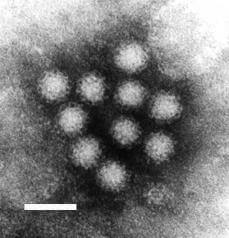A study published in the July edition of Genome Biology says genetic matter, previously ignored by the scientific community, may play an important role in cancer.
The study by the St. Laurent Institute, a non-profit medical research institute focused on the systems biology of disease, a, “VlincRNAs controlled by retroviral elements are a hallmark of pluripotency and cancer” found that novel non-coding parts of the human genome known as vlincRNAs (very long intergenic, non-coding RNAs) triggered by ancient viruses, participate in the biology of stem cells, and in the development of cancer. Importantly, the group of researchers from U.S., Europe and Russia found that the elimination of these vlincRNAs caused the death of cancer cells.
“Understanding this previously ignored part of the human genome, its role in human development, and how it may be taken over by disease, opens a new frontier in science with important implications for medical advances,” said Philipp Kapranov, Ph.D., lead researcher at the St. Laurent Institute. “Future research into the role and function of vlincRNAs holds promise for both highly targeted diagnostic tests and more precise cancer treatments.
Up to 98 percent of human genomic matter is known as “junk” or “dark matter” non-coding DNA, and had for years attracted little interest among scientists who doubted its role in human health and disease. Recent research has begun to identify that part of that non-coding DNA is used by the cell to make RNA such as vlincRNA, highly tissue-specific RNA chains of unusually large lengths, many of which are only found in embryonic or cancerous cells. VlincRNAs found in these two types of cells tend to be expressed based upon genetic signals from ancient viruses that invaded our ancestors’ genome millions of years ago and were gradually “domesticated” over evolutionary time. The number of vlincRNAs expressed by these domesticated viral sequences correlates with both embryonic development and malignant cancers.
“St. Laurent Institute has adapted true single-molecule sequencing technology to global transcriptome analysis, providing state-of-the-art technology for the measurement of the output of the human genome,” said Georges St. Laurent III, Scientific Director of the St. Laurent Institute. “Based upon this technology, we now have a greater understanding of transcriptome regulation, with potential to lead to therapeutic targets and better disease diagnostics.”
About the study
The observational study published in Genome Biology utilized publicly available and unpublished data sets to find 2,147 vlincRNAs that cover 10 percent of the human genome, suggesting that their production is a common, yet undiscovered, feature of human DNA. The vlincRNAs were shown to be present in cancerous cells as well as stem cells and normal human tissues. Certain types of vlincRNAs, especially those triggered by the signals from domesticated ancient viruses, are seen at specific stages of normal development.
Researchers found that some of these vlincRNAs are co-opted by cancer-associated transcriptional programs. Importantly, removal of these RNAs causes the death of cancer cells providing a clear direction for the development of therapeutics and better diagnostics for cancer patients. VlincRNAs may contribute to the regulation of gene expression in the nucleus of the cell. Future study of vlincRNAs may illuminate the biological principles that link together stem cells and cancer.
Dr. Kapranov, Genomics Team Leader at St. Laurent Institute, first discovered large scale production of non-coding RNA from human genome in 2002 as reported in Science.

